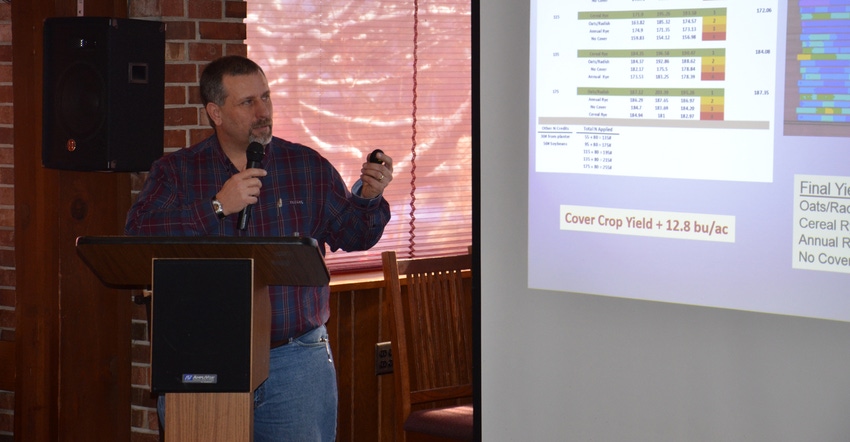
Rodney Rulon estimates that his family spent $91,000 to seed cover crops on their farm. But he also estimates the increased profitability from incorporating cover crops into their system at $376,000. That’s a net profit of $285,000. It’s $80 more profit per acre for cover crops, and a return on investment of 311%.
Rulon, Cicero, farms with his cousins, Ken and Roy, and his uncle, Jerry, as part of Rulon Enterprises. He’s not bashful about sharing those numbers. He often discloses them when he presents a talk about why they grow cover crops on as many acres as possible, including acres where manure will be injected.
Some may scoff at the numbers. Some, especially those who haven’t tried cover crops or who have had a less-than-stellar experience with them, may discount those numbers. None of that deters Rulon. Why?
“We’ve been meticulous about calculating costs, comparing yields and being as logical as possible in arriving at those numbers,” he says. “We’re confident that they reflect what happens on our farm, and that cover crops are important for the profitability of our operation.”
Cost side
Rulon wants to know what it costs his farm to seed and grow cover crops down to the penny. They use various cover crops depending upon the situation. Averaging seed costs over the operation, it pencils out to $14.25 per acre for seed, he says. If you want a range, he pegs it at $14 to $16 per acre for seed.
Application costs average out to about $10 per acre, he adds. So using the high end of the range for seed expense, Rulon calculates that it costs them $26 per acre to establish cover crops.
Cover crops aren’t free. It pays to know which species will best help you accomplish your goals. It also pays to fine-tune seeding rates over time so you’re not applying more seed and spending more money than necessary.
Benefit numbers
Yield increases due to cover crops help fuel the revenue side. Rulon has documented yield increases over time for both corn and soybeans. He calculates benefits based on a 7-bushel-per-acre increase for corn and a 2-bushel-per-acre increase for soybeans. Rulon believes those numbers are conservative, especially for soybeans.
He also calculates long-term fertilizer savings amounts to $10 per acre in phosphorus and potassium. More nitrogen stays in the system because cover crops scavenge, capture and eventually release N for the crop, he notes. He assigns a credit for that. He also assigns a credit for increasing organic matter over time.
Since it’s a long-term calculation, Rulon includes a value for the amount of soil saved from soil erosion and kept on the farm instead. “If we reduce our loss from 21 tons per acre per year to zero with cover crops, we figure that’s worth about $8 per year in soil savings alone,” he notes. “When ground is $10,000 per acre and you can save topsoil, it’s only fair to include a value for it.”
About the Author(s)
You May Also Like




